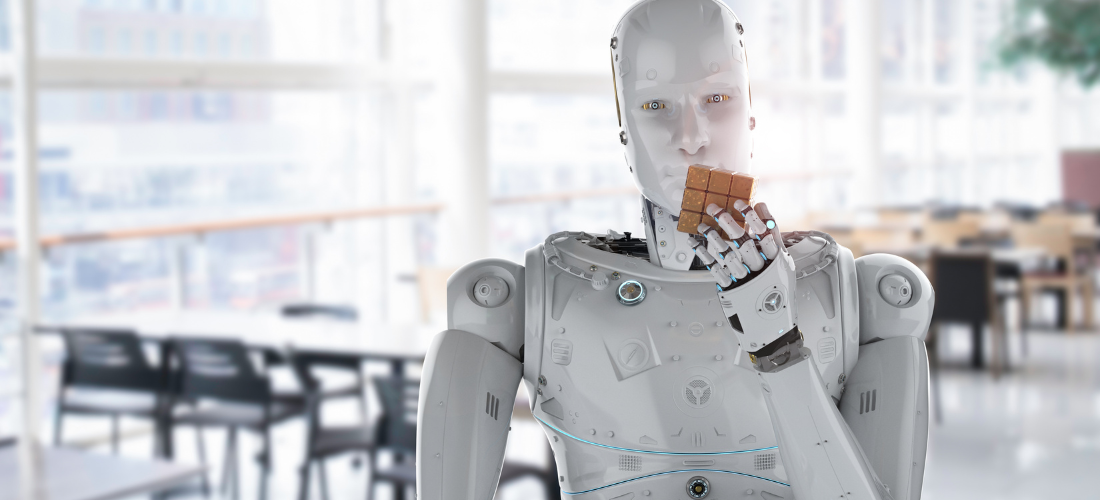
What are Humanoids?
Humanoids are robots designed to mimic the form and behavior of human beings. Unlike traditional robots, they possess limbs and advanced motor skills, allowing them to perform complex movements and tasks requiring agility. Additionally, they are programmed for social interaction, utilizing facial expressions and body language to communicate effectively. These robots have been engineered to integrate seamlessly into environments designed for humans, such as homes, factories, or medical settings, replicating our physical abilities and, in some cases, social interactions. The design and functionality of humanoids aim to create a more comfortable and intuitive experience for humans in various settings, facilitating collaboration and assistance.

How is AI Implemented in Them?
Artificial Intelligence (AI) is the core technology that "brings life" to humanoids, enabling them to learn and adapt to their surroundings. Through neural networks and deep learning algorithms, humanoids can recognize faces, interpret emotions, and make decisions based on real-time data. This AI capability allows them to enhance their skills with each interaction, making them increasingly effective at complex tasks. Furthermore, AI integrates voice recognition systems and natural language processing, allowing humanoids to communicate and collaborate with humans intuitively. This level of AI sophistication enhances their usability across various applications, making them valuable assets in multiple fields.

What is Their Main Function in the Industry and What is Their Projection?
Humanoids are primarily being adopted in industrial, healthcare, and entertainment sectors. In industry, their most prominent function is automating repetitive and hazardous tasks, thus freeing human workers from these risks. They are also starting to play an important role in customer service and elderly care, providing assistance where a human touch is necessary but may be lacking due to various limitations. Looking ahead, humanoids are projected to take on even more complex roles, ranging from assistant engineers to collaborative coworkers. As their physical and cognitive capabilities improve, they are expected to become essential in tasks requiring precision, adaptability, and human interaction.

Are They Here to Replace Humans?
Although humanoids are designed to assist in complex and repetitive tasks, they are not intended to fully replace humans. Their main purpose is to complement human work by performing tasks that require greater precision or are dangerous for people. In sectors like elderly care or medical assistance, humanoids play a vital role as supportive companions, but they do not replace genuine human contact. Humanoids enable us to enhance our efficiency and quality of life, but ultimately, they rely on human supervision and collaboration to be effective.

Who are the Main Players in the Market Today?
As of October 2024, some of the main players in the humanoid market include Tesla with its Optimus robot, designed for industrial tasks; Hanson Robotics, known for Sophia, the most famous humanoid; Boston Dynamics, which has made significant advancements with mobile humanoid robots; and companies like Xiaomi Robotics, which are beginning to make strides in social interaction-focused robots. These companies are leading innovation, whether in caregiving robots or advanced industrial robots, shaping the future of humanoid technology.

What are the Ethical Concerns Surrounding Humanoids?
The rise of humanoids brings about significant ethical concerns, including privacy, job displacement, and human dependency on robots. As humanoids become more integrated into personal and work environments, questions about data collection, user consent, and potential loss of privacy become pressing. Additionally, job automation raises fears about unemployment in certain sectors, while the increasing reliance on humanoids in caregiving roles sparks debates about replacing human empathy and connection with artificial solutions.

How do Humanoids Differ from Other Robots?
Unlike other robots, which may be designed for specific tasks or functions (e.g., robotic arms for assembly lines), humanoids are multi-functional and closely resemble the human body in design. This form allows them to interact more naturally in human-centered environments. While traditional robots often operate in isolated environments or follow pre-defined routines, humanoids are equipped with sensors and AI systems that enable them to navigate dynamically, understand their surroundings, and engage in real-time decision-making.

What is the Future of Humanoids in the Workforce?
In the future, humanoids are likely to occupy roles that require both physical and cognitive labor, potentially becoming partners in collaborative workspaces. They are expected to assist in areas such as healthcare, where their ability to perform precise movements and handle patients could prove invaluable. In industrial settings, humanoids may be deployed in positions that require adaptability and interaction with human colleagues. However, there will be a growing emphasis on ensuring they do not entirely replace human jobs but rather augment human skills.

Conclusion
Humanoids represent a remarkable convergence of robotics and artificial intelligence, designed not only to replicate human physical abilities but also to enhance our daily lives in various ways. With AI at their core, humanoids are already beginning to transform industries by performing complex, hazardous, or repetitive tasks. Although there are concerns regarding their ethical implications and potential to displace jobs, their primary purpose is to complement human work, not replace it. As technology advances, humanoids are poised to become indispensable partners in caregiving, industrial work, and beyond, offering a glimpse into a future where humans and robots work side by side for a more efficient and interconnected world.



